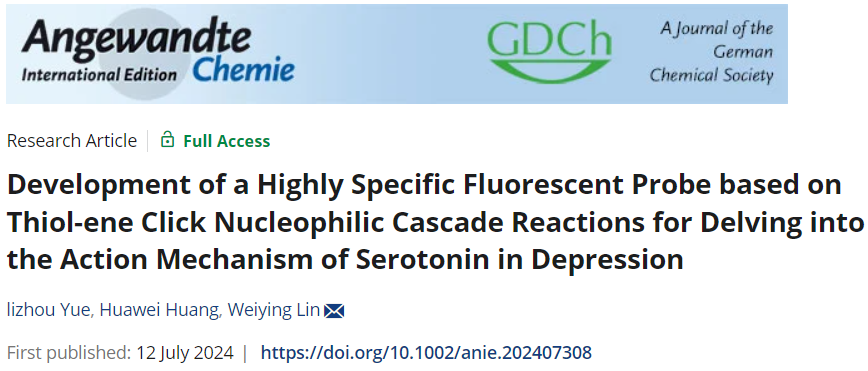Recently, the Probe and Chemical Biology team from the School of Chemistry and Chemical Engineering has made significant research progress in the field of near-infrared II (NIR-II) fluorescence/photoacoustic multimodal luminogens and their biomedical imaging applications. The research findings, titled Activatable second-near-infrared-window multimodal luminogens with aggregation-induced-emission and aggregation-caused-quenching properties for step-imaging guided tumor therapy, were published in the international academic journal Nature Communications. The first author of the paper is Li Wenxiu, a doctoral student from the School of Chemistry and Chemical Engineering, and the corresponding author is Prof. Lin Weiying from the same school. Guangxi University is the sole corresponding affiliation.

Conventional organic luminogens are limited by the single-state luminescence characteristics of either "aggregation-caused quenching (ACQ)" or "aggregation-induced emission (AIE)", making it difficult to achieve precise imaging in complex biological environments. To address this challenge, the team innovatively proposed the concept of "ACQ/AIE dual-property multimodal luminogens (DPMgens)". Through molecular structure design, they ingeniously balanced the radiative and non-radiative transition processes in both solution and aggregated states, enabling a single molecule to exhibit efficient dual-state multimodal luminescence in both solution and aggregated/solid states. This breakthrough bridges the gap between ACQ and AIE materials in practical applications. Based on this, the team successfully developed a series of novel NIR-II multimodal luminogens, DPM-HD1-3, by adopting a synergistic regulation strategy of molecular rigid planes and twisted groups. Experimental results demonstrated that these materials exhibit excellent NIR-II fluorescence, photoacoustic, and photothermal signals in both liquid and aggregated states. Consequently, DPM-HD1-3 can overcome the effects of heterogeneous accumulation, enabling high-fidelity multimodal luminescence in complex environments.

Cancer heterogeneity, characterized by evolving microenvironments and molecular fingerprints over time, poses significant challenges for accurate detection and treatment management. Ideal imaging-guided cancer therapy requires multiple imaging detections at different treatment stages to acquire comprehensive diagnostic information for personalized treatment plans. However, in complex biological environments, conventional multimodal materials are susceptible to the effects of aggregation or uneven concentration, leading to false positive or false negative results. Leveraging the unique characteristics of DPMgens, the team successfully developed a CO-activated therapeutic agent, DPM-HD3-CO, for step-imaging guided tumor therapy. DPM-HD3-CO effectively overcomes the interference from tumor heterogeneity and, via a step-imaging strategy, reveals the dynamic relationship between CO levels in the tumor microenvironment and therapeutic responses across treatment stages. This enables integrated precision diagnosis and treatment for heterogeneous tumors, combining imaging, treatment, and efficacy evaluation. This study not only provides innovative tools for tumor heterogeneity research but also drives pioneering advancements in the emerging field of multimodal luminogens. The proposed dual-property multimodal luminogens overcome the limitations of single-property luminescence in conventional multimodal luminogens, promising broader applications in energy, chemistry, and biomedicine.